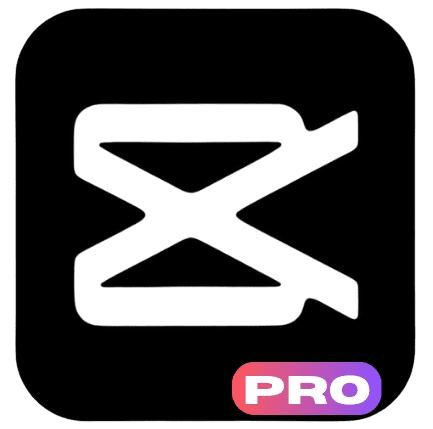How To Add Voiceovers In CapCut: In the world of video editing, voiceovers play a crucial role in storytelling. They can enhance the message of a video, provide clear instructions, or set the tone for the audience. CapCut, a user-friendly video editing app, provides an excellent platform for adding voiceovers to videos. Whether you are a content creator, a vlogger, or a professional filmmaker, understanding how to add voiceovers in CapCut can significantly improve the quality of your work.
Adding a voiceover allows you to narrate your videos, explain processes, or provide commentary on a scene. CapCut offers tools to make the process seamless. With a few simple steps, you can add, sync, and edit your voiceover to match your video perfectly. This functionality is especially useful for tutorials, educational videos, or any project where the voiceover is essential to understanding the content.
In this article, we will explore the complete process of adding voiceovers in CapCut, from recording the narration to syncing it with the video. You will learn how to use the app’s various features to enhance the quality of your voiceover, including adjusting volume, applying effects, and exporting your project. Follow this guide, and you’ll be able to create polished videos with professional-quality voiceovers.
How Do I Record a Voiceover in CapCut?
Recording a voiceover in CapCut is straightforward and doesn’t require any complex setup or equipment. The app has a built-in feature that allows users to record their voiceovers directly within the app, making the process both convenient and efficient.
Step 1: Create a New Project
First, open CapCut on your device and create a new project. Tap the “New Project” button on the main screen. Then, select the video you want to work with. CapCut will place the video in the timeline, where you can begin editing.
Step 2: Access the Audio Settings
Once your video is loaded, tap the “Audio” button at the bottom of the screen. You’ll be presented with several options, including music, sound effects, and voiceover. Select the “Voiceover” option to start recording your voice.
Step 3: Start Recording
Now that you are ready to record, tap the red record button. As you speak, CapCut will record your voice and automatically sync it with the video. You can pause and resume the recording if needed. Ensure that your speech is clear and that it matches the actions in the video. Once you are finished, tap the stop button to end the recording.
Step 4: Review and Save
After stopping the recording, CapCut will save the voiceover to the timeline. You can listen to the recording and decide if it meets your expectations. If you need to re-record, simply tap the trash icon to delete the current recording and start again. Once satisfied, save the voiceover, and it will be ready to use in your project.
Recording a voiceover in CapCut is quick and easy, providing a seamless process for narrating your videos.
How Do I Sync the Voiceover With the Video in CapCut?
Syncing the voiceover with the video is crucial to create a polished and professional video. Without proper synchronization, the voiceover may seem out of place or misaligned with the actions in the video. Fortunately, CapCut makes it easy to adjust the timing and ensure that your voiceover matches perfectly.
Step 1: Add Your Voiceover to the Timeline
After recording the voiceover, it will appear as an audio track in the timeline. If you recorded it in real-time, CapCut would automatically align the audio with the video. However, you may need to make adjustments if the synchronization isn’t perfect.
Step 2: Move the Audio Track
To adjust the timing, simply tap on the voiceover track in the timeline. Then, drag it left or right to move it to the desired position. Pay attention to the waveform of the audio, as this will help you see where the speech aligns with specific actions or points in the video.
Step 3: Use the Zoom Feature
If you need to make more precise adjustments, CapCut allows you to zoom in on the timeline. This will give you a clearer view of the video and audio waveforms, making it easier to align the voiceover with specific moments. You can also zoom out for a broader view if you need to adjust the overall timing.
Step 4: Split the Audio If Necessary
Sometimes, you may need to split the audio track into separate sections to align them with different parts of the video. To do this, move the playhead to the point where you want to make a cut, and tap the “Split” icon. This will divide the voiceover into two parts, allowing you to shift and align each section independently.
By following these steps, you can ensure that your voiceover is perfectly synced with the video, creating a smooth and professional result.
How Can I Edit My Voiceover in CapCut?
After recording your voiceover, you may need to edit it to improve its quality or adjust specific elements. CapCut offers a variety of editing tools to help you refine your audio and ensure it sounds perfect.
Step 1: Trim the Voiceover
If your voiceover contains unnecessary parts or mistakes, you can easily trim it. Tap on the voiceover track in the timeline, and you will see handles on either side. Drag these handles inward to trim the beginning or end of the audio. This feature allows you to remove unwanted sections and make the voiceover more concise.
Step 2: Adjust the Volume
CapCut also provides an option to adjust the volume of your voiceover. Tap the voiceover track, and you will see a volume control slider. Move the slider left to decrease the volume or right to increase it. This feature is useful if you need to balance the voiceover with other audio elements, such as background music or sound effects.
Step 3: Remove Background Noise
Sometimes, recordings can have background noise that distracts from the voiceover. CapCut offers a noise reduction feature to help clean up the audio. Tap the voiceover track, go to the audio settings, and select the “Noise Reduction” option. This will help reduce unwanted sounds, making the voiceover clearer and more professional.
Step 4: Apply Audio Effects
CapCut offers several audio effects that can be applied to your voiceover to enhance its quality. To apply an effect, tap the voiceover track, then tap the “Effects” button. Choose from effects like echo, reverb, or pitch adjustment to add depth and style to your voiceover.
Editing your voiceover in CapCut gives you full control over the audio, allowing you to make it sound exactly the way you want.
How Do I Add Multiple Voiceovers in CapCut?
Sometimes, a video might require multiple voiceovers for different sections or scenes. CapCut allows you to easily add multiple voiceovers, giving you flexibility in your narration.
Step 1: Record the First Voiceover
Start by recording the first voiceover, as described earlier. This will be your base track. Once you are done, review the audio to ensure it is properly synced with the video.
Step 2: Record Additional Voiceovers
If your video requires more voiceover narration, simply tap the “Voiceover” button again and record the next section of audio. Each new recording will appear as a separate audio track in the timeline, allowing you to layer multiple voiceovers.
Step 3: Sync and Adjust Each Voiceover
After recording all your voiceovers, you will need to sync each one with the video. Use the techniques described earlier to move, trim, and adjust each voiceover track. You can also adjust the volume of each track to ensure they are balanced.
Step 4: Edit and Fine-Tune
Once all voiceovers are added, listen to the entire project to ensure the voiceovers flow smoothly together. Make any necessary adjustments to the timing, volume, or effects to create a cohesive and polished video.
Adding multiple voiceovers in CapCut is simple and gives you the ability to narrate different sections of your video with ease.
How Do I Export a Video With Voiceovers in CapCut?
After recording, syncing, and editing your voiceovers, you will want to export your video to share with others. CapCut allows you to export your project in various formats, ensuring your video looks great on any platform.
Step 1: Review the Entire Video
Before exporting, take a moment to review the entire video. Make sure the voiceovers are properly synced and that all elements are aligned. Check the audio levels to ensure the voiceover is clear and not too loud or soft.
Step 2: Tap the Export Button
Once you are satisfied with your video, tap the “Export” button located at the top right of the screen. CapCut will ask you to choose the video resolution and frame rate. Select the settings that are appropriate for your intended use.
Step 3: Save the Video
After choosing the settings, tap “Export” again to save the video to your device. Depending on the length and complexity of your project, the export process may take a few moments.
Step 4: Share Your Video
Once the video is exported, you can share it directly from CapCut to social media platforms or upload it to video-sharing websites.
Exporting your video with voiceovers is easy, and CapCut ensures that your project is high-quality and ready for sharing.
What Are the Best Practices for Recording Voiceovers in CapCut?
Recording a voiceover in CapCut can be straightforward, but there are some best practices that can help you achieve better results.
Use a High-Quality Microphone
While you can record voiceovers using your phone’s built-in microphone, using an external microphone can improve the sound quality. A high-quality microphone will capture clearer audio and reduce background noise.
Record in a Quiet Environment
To ensure the best possible recording, make sure you are in a quiet environment. Avoid recording near noisy appliances, fans, or other distractions.
Speak Clearly and at a Steady Pace
When recording your voiceover, speak clearly and at a steady pace. Avoid rushing through the script, and make sure each word is pronounced clearly.
Adjust Audio Levels During Recording
Before you start recording, check your device’s audio levels. If the levels are too low, your voiceover may be hard to hear. If they are too high, the audio may distort. Aim for balanced audio levels throughout your recording.
Following these best practices will ensure that your voiceover sounds professional and enhances your video content.
Conclusion
Adding voiceovers in CapCut is an essential skill for anyone looking to create professional videos. Whether you are recording narration, providing instructions, or adding commentary, CapCut makes it easy to add, sync, edit, and enhance your voiceovers. By following the steps outlined in this guide, you can create videos that are not only visually compelling but also narratively rich. With CapCut’s intuitive interface and powerful editing tools, you have everything you need to produce high-quality voiceovers for your videos.


